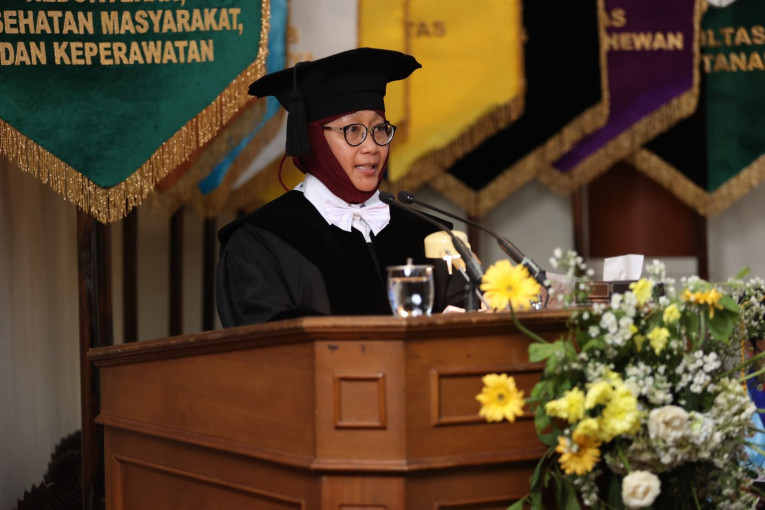
Traditional medicine remains highly relevant in treating illnesses amidst the advancement of medical technology nowadays.
One such example is Sujok therapy, a traditional treatment from South Korea that utilizes specific points on the body to alleviate pain without consuming medication, reduce emotional and mental disturbances, and treat other ailments.
This was expressed by Professor Intansari Nurjannah, a faculty member of the UGM Faculty of Medicine, Public Health, and Nursing (FK-KMK UGM), during her inauguration speech as a full professor in mental and community nursing on Tuesday (Apr. 30) at the UGM Senate Hall.
In her opening speech, Professor Nurjannah shared her interest in delving into traditional medicine, driven by her desire to advocate for her mother’s recovery.
“My journey began from the need to help my mother, who had to undergo hemodialysis. Armed with the power of love, I have attended various traditional medicine skills training and eventually discovered Sujok therapy,” said the new professor.
She admitted that Sujok therapy repeatedly amazed her after applying it to her mother. Her health condition improved significantly, and several times, Sujok therapy provided quick and accurate effects, such as relieving pain without using analgesic drugs.
She even experienced profound happiness when she saw her mother sleeping soundly without feeling pain throughout her body. However, ultimately, God had different plans, and her mother passed away in February 2022.
Professor Nurjannah explained that Sujok therapy is a traditional treatment from South Korea, first introduced by a South Korean philosopher, Park Jae Woo.
To perform the therapy, hand and foot points are stimulated using various methods, including massage, seed application, magnet application, needle puncture (Sujokpuncture), and moxibustion (moksa).
Like other traditional treatments, Sujok therapy extensively utilizes materials available in nature. According to her, Sujok therapy employs materials that can be easily obtained from the surrounding environment. Combining various methods can also yield better effects on the body.
She added that Sujok emphasizes the distribution of energy in the human body in addition to physical therapy.
As Professor Park Jae Woo mentioned, human energy is divided into four parts: meridians, chakras, Sujok ki zones, and the diamond energy system. This method can heal problems in various human body dimensions, including physical and spiritual aspects.
“Various literature mentions that the body’s response speed to Sujok therapy is quite astonishing, and in some cases, improvements can be felt within minutes,” explained Professor Nurjannah.
Compared to other treatment methods, she stated that Sujok therapy also has almost no risk of interactions that could hinder the effectiveness of medical treatments that patients may have undergone.
Seeing this potential, Professor Nurjannah continues to delve into Sujok therapy from various experts and professors worldwide, such as South Korea, Australia, India, and others.
Not only that, but she also actively promotes Sujok therapy in several community health centers in Yogyakarta. One is the Jetis II Bantul Community Health Center, which has the most certified therapists by Indonesia’s National Professional Certification Agency (BNSP).
Professor Nurjannah added that as a follow-up to promoting Sujok therapy, FK-KMK UGM and the Jetis II Bantul Community Health Center will open Sujok therapy services. Of course, this service is hoped to be implemented in all other community health centers in various regions.
At the end of the inauguration ceremony, the Rector of UGM, Professor Ova Emilia, mentioned that Professor Nurjannah is one of the 460 active full professors at UGM. At the faculty level, she is one of the 66 active full professors out of the 131 full professors owned by FK-KMK UGM.
“I also congratulate the nursing department because she is the second full professor this department has ever had. Hopefully, there will be more new full professors in the future,” said the rector.
Author: Tasya
Editor: Gusti Grehenson
Photographer: Firsto

